When you learn Chinese, it can seem the most exotic and impenetrable of languages and that’s largely due to the Chinese alphabet. The Chinese writing system may appear to the uninitiated as both beautiful and mysterious in equal measure.
Chinese writing is notoriously difficult to master. And if you’re thinking of taking up the language, you probably have many questions.
To help, in this post, I’ll provide a broad introduction to the Chinese alphabet, explaining how it works, where it comes from and why you need to learn it.
By the end, hopefully, I’ll also convince you that learning the Chinese alphabet is not as hard as its reputation suggests. And that, in fact, it’s something you should look forward to rather than dread.
Pro Tip
By the way, if you want to learn Chinese fast (including the Chinese alphabet) and have fun, my top recommendation is Chinese Uncovered which teaches you through StoryLearning®.
With Chinese Uncovered you’ll use my unique StoryLearning® method to learn Chinese characters naturally through story… not rules. It’s as fun as it is effective.
If you’re ready to get started, click here for a 7-day FREE trial.
Table of Contents
What Are Chinese Characters?

Nowadays, we see Chinese writing everywhere. We see it in sports stadiums and on football shirts, on shipping containers and on lorries, in online ads and on the news when we watch tv.
But what do all those strange symbols mean? And how do they work?
The title of this post is actually slightly misleading because Chinese has no “alphabet”. Chinese doesn’t use letters, it uses characters.
In Chinese, each character represents one syllable. And each has a distinct meaning. Some characters may be pronounced exactly the same way. But they're written completely differently.
For example, 不 and 步 are both pronounced bù, but you can’t replace one with the other. The first means “not” while the second means “step”.
Ancient Chinese was a monosyllabic language, so in the ancient Chinese alphabet each character represented a single word. However, with the passage of time and the evolution of the language, new concepts came to be expressed by combining single syllables to create new words.
For example, 火 (huŏ) means “fire” and 车 (chē) means “vehicle” – but together, 火车 means “train”.
Chinese “Alphabet”: A Little history
The history of Chinese characters is an immensely fascinating subject. But here we can only scratch the surface. However, it's still useful to understand a bit about where Chinese characters come from and how they have developed.
The Chinese writing system is among the world’s most ancient. The precursors of modern Chinese characters have been discovered carved into bones dating back at least 3,500 years. Although the sophisticated vocabulary in use suggests that, even then, they were already very old.
The first characters were pictographs, essentially drawings of whatever they represented. Over thousands of years, many have changed beyond recognition. But in some, you can still detect a hint of the original version.
Can you guess what 人 (rén) or 羊 (yáng) mean? The first is the character for “person”, while the second means “sheep”. It only takes a little imagination to see why.
However, you can't express all concepts like this. And more abstract ideas are represented differently. For example, in modern Chinese, 上 (shàng) means “up” while 下 (xià) means “down”. Again, the logic is easy to see.
The next step was to come up with symbols for more complex meanings. To achieve this, individual characters were combined to create symbols for other words: the Chinese character for “woman” is 女 (nǚ) and a character meaning “child” is 子 (zĭ). But when combined, the resulting character 好 (hăo) means “good”.
Similarly, 木 (mù) means “wood” while 林 (lín) means “forest” and 森 (sēn) means “full of trees”.
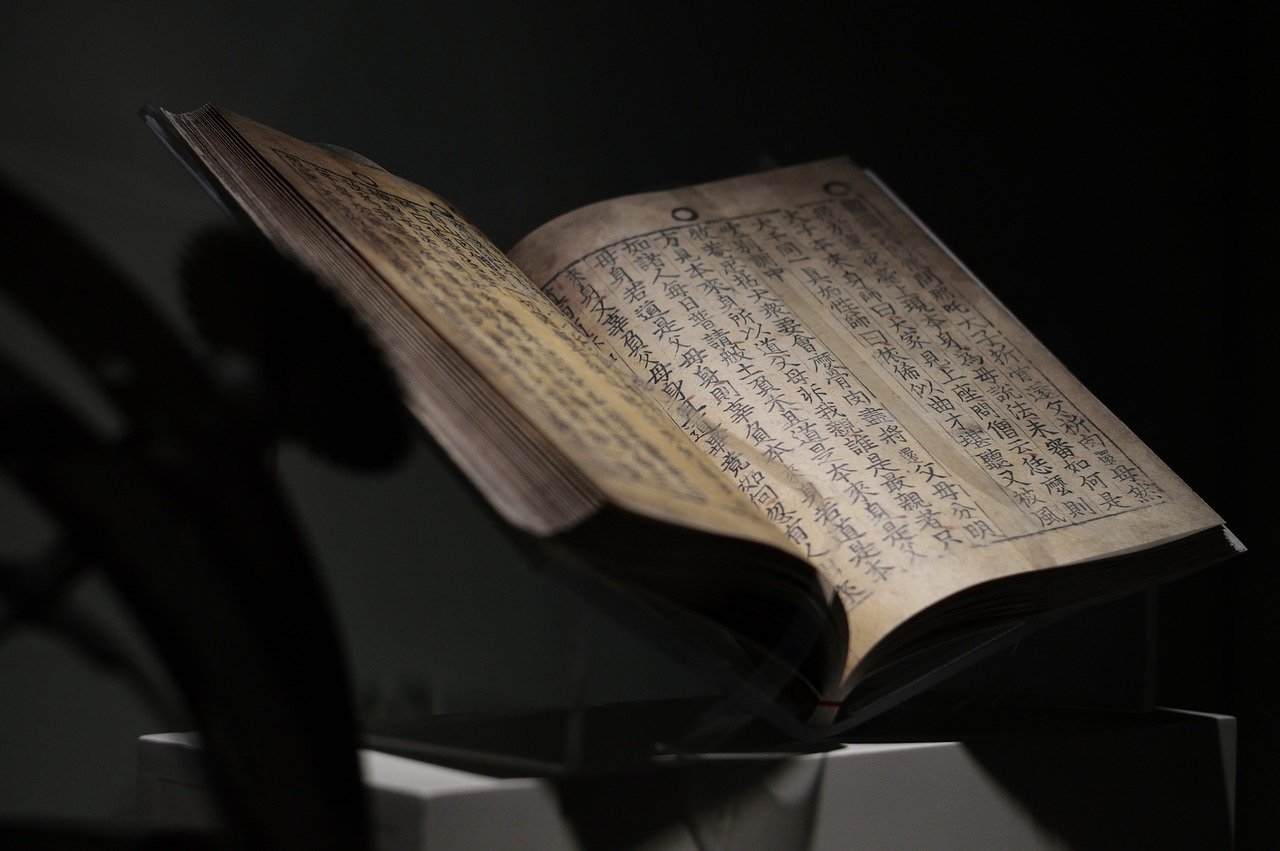
How Do Modern Chinese Characters Work?
Although these examples display an undeniably elegant logic, that doesn’t mean it’s possible to somehow “decipher” a character you’ve never seen before.
One of the major differences between Chinese writing and a system based on an alphabet is that if you haven’t learnt a character, there’s no way of reading it. If you haven’t met a character before, you can’t tell its meaning or even know how to pronounce it.
For example, if you know 木, you might guess that 林 has something to do with trees. But that doesn’t mean you know the precise meaning. And nor does it mean you know it’s pronounced lín.
This means you have to learn to read and write every individual character by heart. And there are lots of them. However, this isn’t quite as formidable a task as it might first appear, and now I’ll explain why.
Chinese Radicals And Phonetic Elements
Chinese characters are not made up of random lines and squiggles – their different parts are derived from other characters, and most parts have meanings.
For example, you'll notice that 你 (nĭ, “you”) and 他 (tā, “he”) both contain 亻. This is not a character in itself; it’s a version of 人 that is used in other characters. And it’s no coincidence that the characters for “you” and “he” both contain the symbol for “person”.
This part of the character is what’s known as the Chinese radical. It is used to categorise the character. And if you can identify the radical, it can give you a clue about the meaning.
To take another example, the “water” radical is 氵. It comes from 水 (shuĭ, “water”) and is found in many other characters related to water – like 河 (hé, “river”) and 湖 (hú, “lake”).
Many characters also contain a phonetic element that can give you a hint about the pronunciation. The character 青 (qīng) means “green”, “blue” or “black”, but it also appears in清 (qīng, “clear”) and 情 (qíng, “feelings”). The only difference in pronunciation between 青, 清and 情is the tone.
Sometimes the difference between the pronunciation of the phonetic element and a character it is found in is more significant. For example, the phonetic part of 河 (hé) is 可 (kĕ).
However, by identifying the radical and the phonetic element, you can find clues about what it means and how to say it. While it’s not possible to work out the exact pronunciation or meaning of an unknown character, at least this can serve as an aid to your memory.
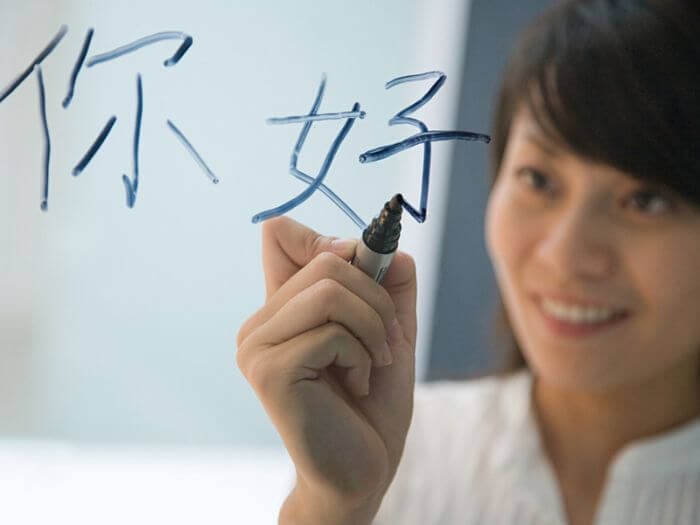
Making Chinese Words With Characters
So far, I’ve talked mainly about individual characters. But it’s important to realise that in modern Chinese, many words are polysyllabic and are made up of combinations of individual characters.
For example, take the character 林. Earlier, I said this character means “forest”, but you can’t use it on its own. If you want to say “forest” in a sentence, the word is 森林 (sēnlín). Similarly, while the character 子 means “child”, in modern Chinese, the word you use for “child” is 孩子 (háizi).
Traditionally, Chinese was written from top to bottom, with the first column on the right. It was sometimes also written in lines from right to left, for example, on gates – something that can still sometimes be seen today
Modern Chinese is written in lines from left to right like English. But it's a peculiarity of Chinese writing that it is just as easily understood written in any direction.
Reform Of The Chinese “Alphabet” In The 1950s
There’s one event in the history of Chinese characters that you need to know about. And that’s the reform of 1956. In that year, the communist government of China decided to simplify around 2,000 of the most common characters to make them easier to learn and boost levels of literacy.
However, since these reforms only took place in mainland China, Chinese in Taiwan, Hong Kong and many overseas Chinese communities have continued to use the traditional characters, with the result that two sets of characters are now in use.
This means if you study Chinese in mainland China, you'll study simplified characters. But if you study in Taiwan, you'll learn the traditional versions.
However, most Chinese schools around the world now use the simplified versions that you will see in mainland China. And simplified characters are now considered “standard”.
Here are a few examples of some differences, with the simplified version on the left:
- 台湾 台灣 táiwān (Taiwan)
- 门 門 mén (door)
- 说 說 shuō (speak)
- 爱 愛 ài (love)
The last one is particularly interesting since the communist government of the 1950s decided to simplify the character for “love” by removing the part in the middle that means “heart” and replacing it with “friend”.
How Do Children Learn To Write The Chinese Alphabet?
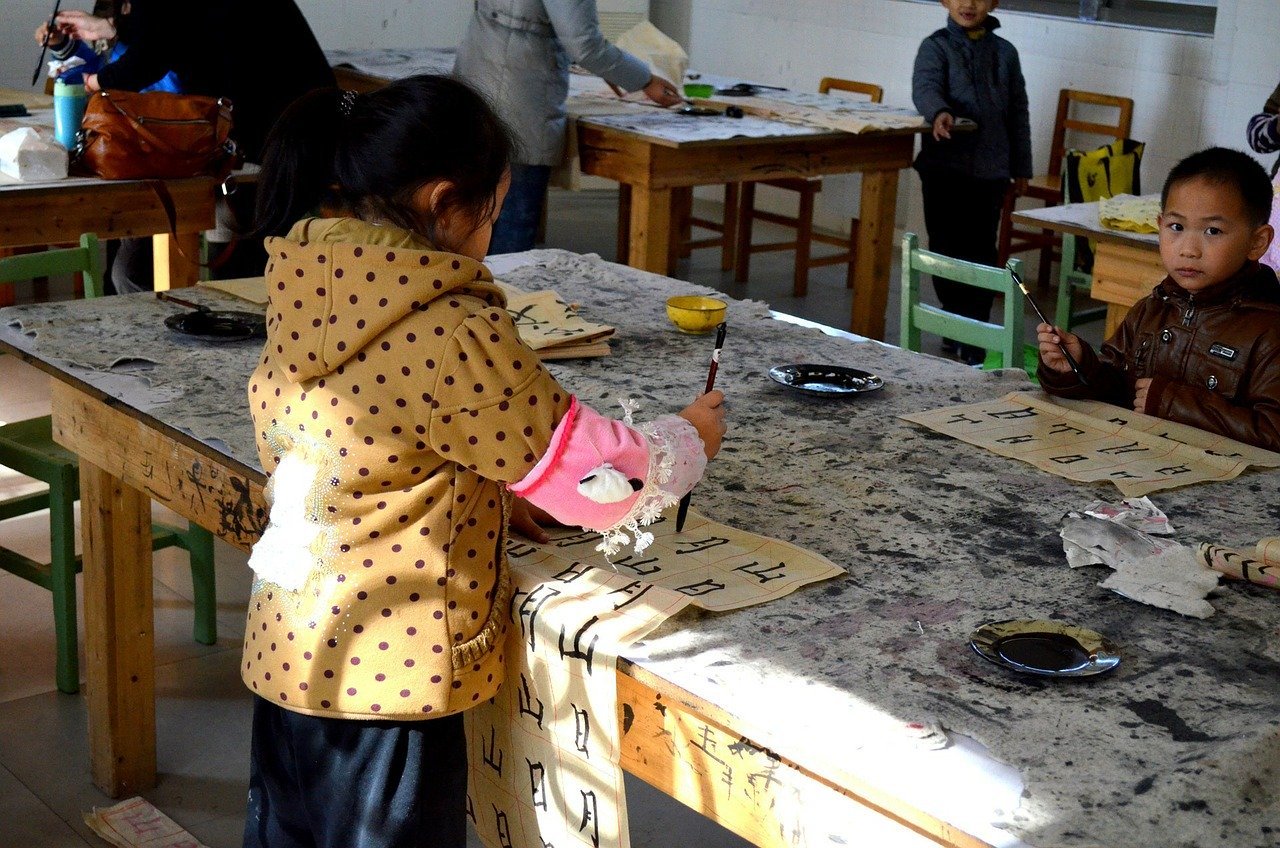
Now you know something about how Chinese characters work, it’s time to talk about learning them. So how do Chinese children do it? The short answer is, by starting young and spending lots of time practising!
Since there are far more characters to learn than there are letters in our alphabet, it takes much longer for Chinese children to become literate than it does for children who speak English, French or Spanish, for example.
From as early as only two or three, Chinese children use a combination of illustrated books, flashcards and similar aids to learn to recognise characters. They also spend many hours copying them out to practise.
And as someone at the start of their Chinese learning journey, this is something you can look forward to as well!
There’s also another tool Chinese children use to help them learn. And it’s one that will prove invaluable to you, too: pinyin.
What Is Pinyin?
Throughout this post, the pronunciation of the characters has been given next to them in Roman letters with some funny-looking accents. This is pinyin, and it will become a familiar friend as you take your first steps into the world of Chinese language learning.
In Chinese, 拼音pīnyīn simply means “phonetic”, and it’s the official form of Romanisation in the People’s Republic of China. Pinyin allows you to write Chinese words phonetically.
And those “accents” are not accents at all – they’re tone marks telling you which of the four tones to use when reading a word.
Chinese children learn pinyin to help them learn characters and correct Chinese pronunciation. And as a learner of Chinese, you will do the same before you even begin to look at characters.
While some of the letters in pinyin are pronounced very differently to English, it’s not hard to learn. And this system will act like a pair of stabilisers on a bike that will allow you to read and write in Chinese before you are ready to start using characters.
How Can You Learn Chinese Characters?
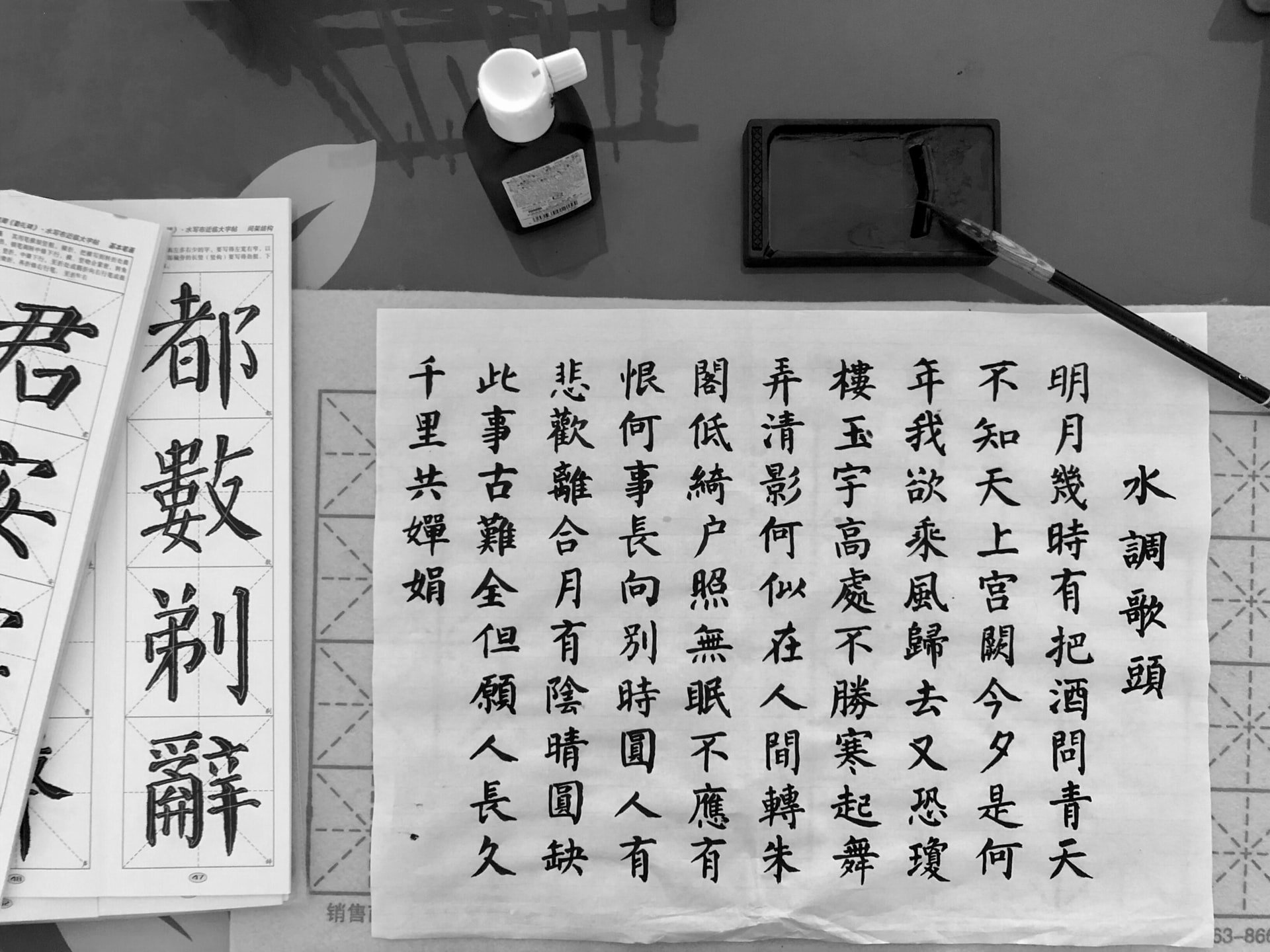
Although your first lessons will make extensive use of pinyin, as early as possible, you'll also start learning Chinese characters. So how can you do it?
As somebody learning Chinese as a foreign language, you'll employ many of the same techniques as Chinese children. And there’s no avoiding the fact that if you want to learn to read and write Chinese, you're going to have to spend a lot of time doing it.
Start by copying out the most common characters you learn and also use flashcards to practise recognising them. You'll surprise yourself with how quickly the stock of characters you know expands.
Doodle Chinese characters when you aren’t busy. And as soon as you can, start writing simple sentences about yourself or anything else you can think of. You can always write any characters you don’t know in pinyin.
As you learn, you'll start to get a feel for the logic of the writing system. And with a little lateral thinking, you'll start to develop ways of remembering different characters.
For example, you might remember that 烟 (yān, “cigarette”) includes the “fire” radical and also looks like somebody looking at himself in the mirror (maybe smoking?).
Or you might notice that in 幸福 (xìngfú, “happiness”), the first character 幸 (which alone means “fortune” or “good luck”) is made up of two elements meaning “soil” and “sheep”. And anyone who has both land and animals is very lucky indeed!
It doesn’t matter how ridiculous the mnemonic is – as long as it helps. But you'll quickly learn to make up stories like this about different characters to help you remember them.
Finally, the Skritter app comes highly recommended. You have to pay for a subscription, but using it every day is an excellent way to improve your knowledge of characters and is well worth considering if you are serious about learning Chinese. Get 10% off here!
Do You Have To Learn Chinese Characters?
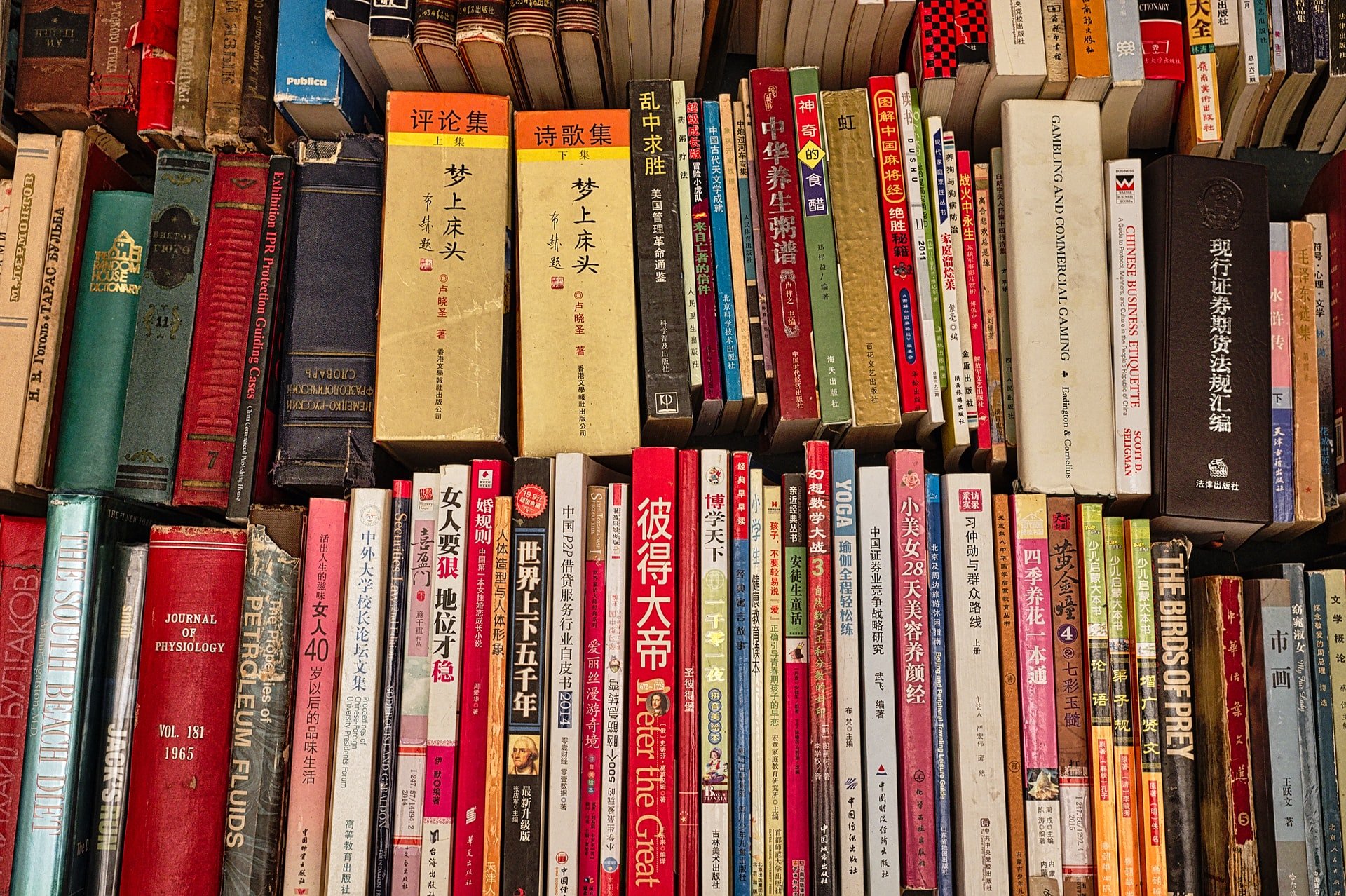
When I was talking about pinyin, a couple of thoughts might have occurred to you.
First, if Chinese children start by learning to write their language in Roman letters, why do they persist in using such a devilishly difficult script when a much easier alternative exists?
And second, if you can read and write Chinese in pinyin, do you, as a learner, even need to bother with learning characters?
While it’s true that most Chinese can read pinyin, if you give a native speaker a pinyin text, they will find it very difficult to understand.
This is partly because there are so many Chinese homophones (words that are pronounced the same), and it can be difficult to understand which word is intended just from the pinyin.
For example, if you see bù written in pinyin, how do you know whether it is supposed to be 不, 步, 部, or 布, all of which have exactly the same pronunciation but very different meanings?
Yes, you may be able to work it out from the context. But if the whole text is in pinyin, it might not be so easy. Believe me, once you learn to read in Chinese, it’s much easier to understand a text written in characters than one written in pinyin!
Plus, since so much communication nowadays is digital, if you don’t learn to read and write Chinese, you'll never be able to send a business email in Chinese. And you won’t be able to chat with your Chinese friends via messaging apps.
You'll only be able to use Chinese for oral communication, and this will severely limit how useful your Chinese will be. As well as reducing your opportunities to practise and improve further, through reading stories for example.
In short, unless you only hope to learn a few basic phrases and have no aspirations of taking it further then you can get away without learning the characters. But if you're serious about learning Chinese, you need to tackle the writing system.
FAQs About The Chinese Alphabet
Is there a Chinese alphabet A to Z?
No, Chinese doesn't have an alphabet that goes from A to Z. Instead, it uses logographic characters, where each character represents a word or part of a word.
Mandarin Chinese does have a system called Pinyin, which uses the Latin alphabet to help with pronunciation, but it doesn't replace characters in writing.
How many letters are in the Chinese alphabet?
Chinese doesn't have an alphabet with letters like in English. Instead, it uses characters, each representing a syllable or word.
There are thousands of unique Chinese characters, but to be literate in modern Chinese, a person typically needs to know about 2,500 to 3,500 characters.
What is the letter J in Chinese?
Chinese doesn't have direct equivalents for letters like “J” since it uses characters rather than an alphabet.
However, in Pinyin (the system for transcribing Chinese sounds using the Latin alphabet), “J” represents a sound similar to the English “j” as in “jeep.”
The sound “J” in Pinyin often appears in words like “ji” (鸡, meaning “chicken”) and “jia” (家, meaning “home” or “family”).
What is the letter H in Chinese?
Chinese doesn’t have an alphabet with individual letters like “H,” but in Pinyin (the phonetic system using Latin letters for pronunciation), “H” represents a breathy sound similar to the English “h” as in “hello.”
It’s often used in words like “hao” (好, meaning “good”) and “he” (喝, meaning “to drink”).
Chinese Alphabet: Take The First Step
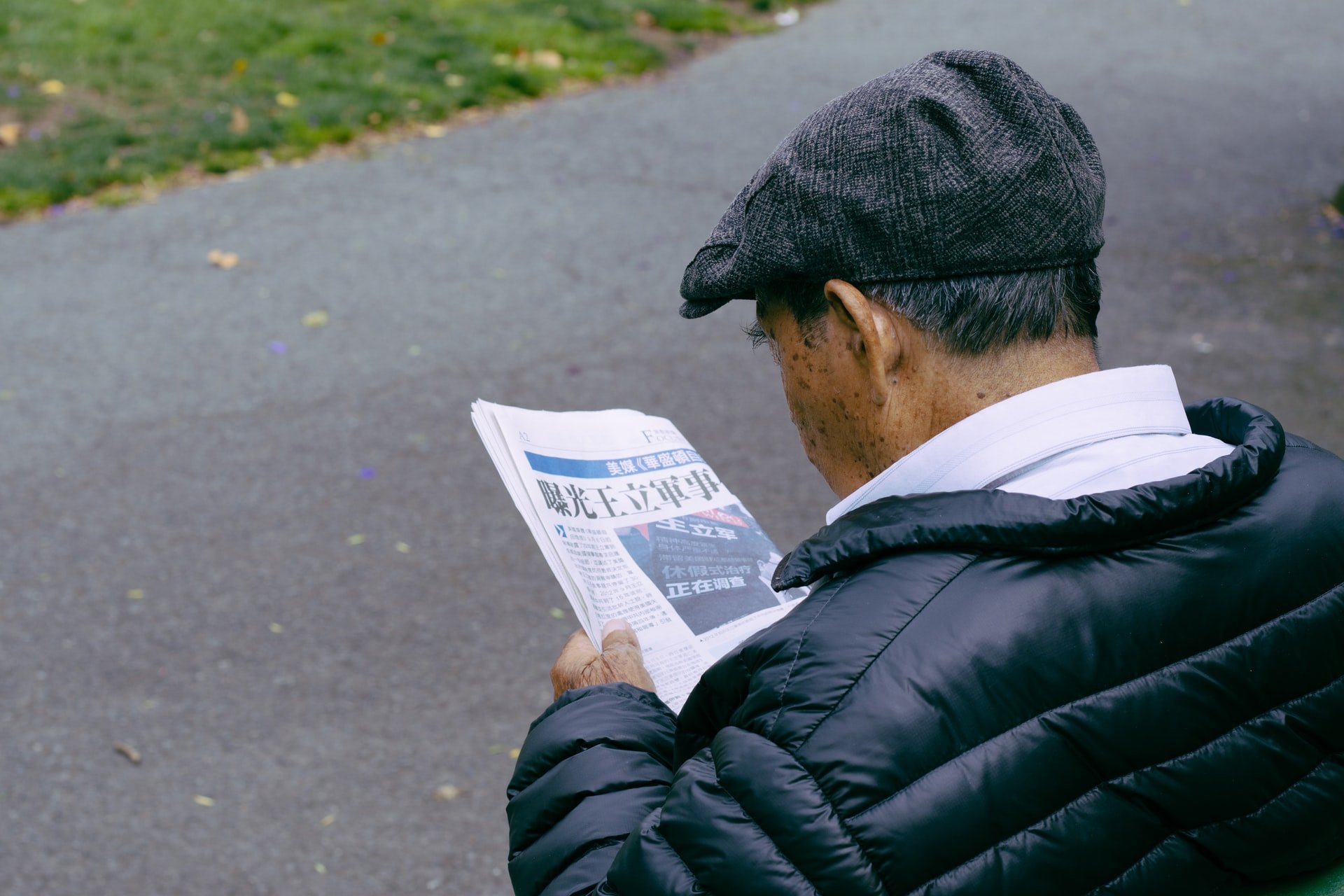
So far, I have avoided the very obvious question of how many Chinese characters there are. The answer depends on who you ask. But it could be 50,000, 80,000 or even over 100,000. The good news, though, is that you don’t need to learn anything like this many.
A university-educated native speaker usually knows about 8,000, while to read a newspaper, you “only” need around 2-3000. And if you know that many, you'll already have a very impressive level of Chinese.
To reach this number, patience and dedication will be your greatest allies. Yet for many people, once they start, practising Chinese characters can be an enjoyable, relaxing and even therapeutic activity.
The more you learn, the more it all falls into place and the more you appreciate the beauty and logic of a writing system that has been in use for thousands of years.
You'll never “finish” learning Chinese characters. And studying them is an adventure that will never end.
So it is perhaps fitting that the people who created such a system of writing are also the ones who gave us the famous saying that is so apt at the beginning of such an undertaking:
千里之行始于足下
qiān lĭ zhī xíng shĭ yú zú xià
A journey of a thousand miles begins with a single step.

Olly Richards
Creator of the StoryLearning® Method
Olly Richards is a renowned polyglot and language learning expert with over 15 years of experience teaching millions through his innovative StoryLearning® method. He is the creator of StoryLearning, one of the world's largest language learning blogs with 500,000+ monthly readers.
Olly has authored 30+ language learning books and courses, including the bestselling "Short Stories" series published by Teach Yourself.
When not developing new teaching methods, Richards practices what he preaches—he speaks 8 languages fluently and continues learning new ones through his own methodology.










































